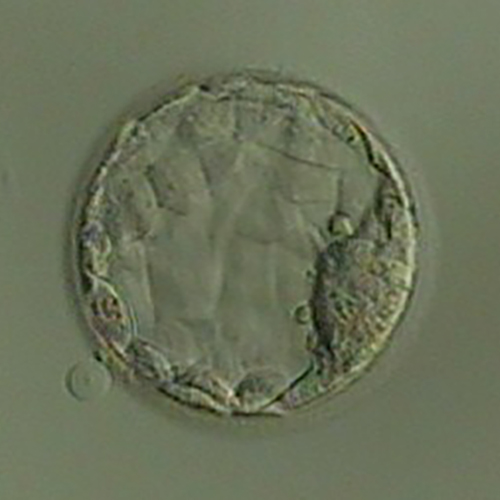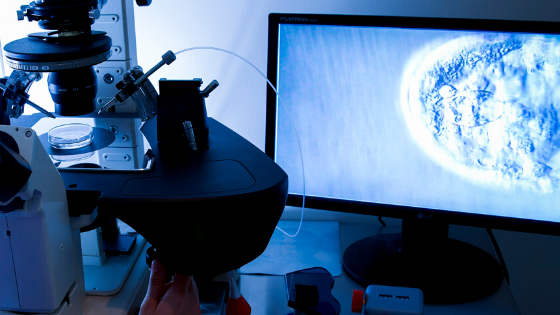What is a Blastocyst?
When an egg and sperm combine during fertilization, a new single-celled organism is created called a zygote. After fertilization, the zygote begins dividing (the cleavage stage) and turns into cluster of cells known as a morula. A morula is an early-stage embryo consisting of up to 16 cells (called blastomeres) contained within the zona pellucida (protective outer shell). Under a microscope, the blastomeres of the morula are distinguishable as separate cells. As the cells continue to divide and multiply, a compaction process occurs and the cells become indistinguishable from each other. Forming about 5 days after fertilization, this ball of matter has about 100 cells within it and is now called a blastocyst. The monumental moment in the development of a blastocyst from a morula is called genomic activation. In order to continue development past the morula stage, the embryo must activate its own newly-formed genetic material combined from genes of the mother and the father. If it cannot propel its own development past this stage, the embryo will not be viable. Each blastocyst contains 2 types of cells- one group of cells develops to form the placenta, and the other group goes on to form the fetus. An embryo that has developed into the blastocyst stage is now ready to “hatch” out of the zona pellucida and attach to the uterine lining.
Why Are Blastocysts Important in an IVF Cycle?
The more developed the embryos are at the time of transfer in an IVF cycle, the more information the embryologists can gather about the embryo. This helps to determine which cultured embryos are the most viable. The goal is to transfer the fewest, most viable embryos, ideally transferring a single embryo to reduce the risk of a multiple pregnancy while increasing the overall chance of a successful cycle. A multiple pregnancy can be risky for both the mother and the babies.
How Can Transferring Blastocysts Increase Success and Reduce the Risk of Multiples?
 In a conventional IVF cycle, the embryo(s) is transferred into the uterus 3 days after fertilization, while still in the 6-8 cell stage. There, they continue to grow and develop inside the uterus before attaching to the uterine lining. At the cleavage stage, it is difficult to assess whether the embryo will continue to develop into a blastocyst or if genetic activation is not possible due to chromosomal-level abnormalities or other issues. While it is ideal to only transfer one embryo in a typical IVF cycle, 2 embryos are sometimes transferred depending on their quality, in hopes that at least one will continue on to the blastocyst stage, attach to the uterine lining, and develop into a pregnancy. This, however, also increases the chance for more than one of the embryos to develop into a pregnancy resulting in multiples such as twins or greater. In a blastocyst transfer cycle, the blastocyst culture allows the embryologists to observe the development of each embryo and to know which embryos develop into blastocysts. The blastocysts are graded on a scale, with the highest rated blastocyst favored for transfer.
In a conventional IVF cycle, the embryo(s) is transferred into the uterus 3 days after fertilization, while still in the 6-8 cell stage. There, they continue to grow and develop inside the uterus before attaching to the uterine lining. At the cleavage stage, it is difficult to assess whether the embryo will continue to develop into a blastocyst or if genetic activation is not possible due to chromosomal-level abnormalities or other issues. While it is ideal to only transfer one embryo in a typical IVF cycle, 2 embryos are sometimes transferred depending on their quality, in hopes that at least one will continue on to the blastocyst stage, attach to the uterine lining, and develop into a pregnancy. This, however, also increases the chance for more than one of the embryos to develop into a pregnancy resulting in multiples such as twins or greater. In a blastocyst transfer cycle, the blastocyst culture allows the embryologists to observe the development of each embryo and to know which embryos develop into blastocysts. The blastocysts are graded on a scale, with the highest rated blastocyst favored for transfer.
If you’re having trouble conceiving and would like to set up a consultation to discuss your options or have specific questions about your cycle, please contact us.

